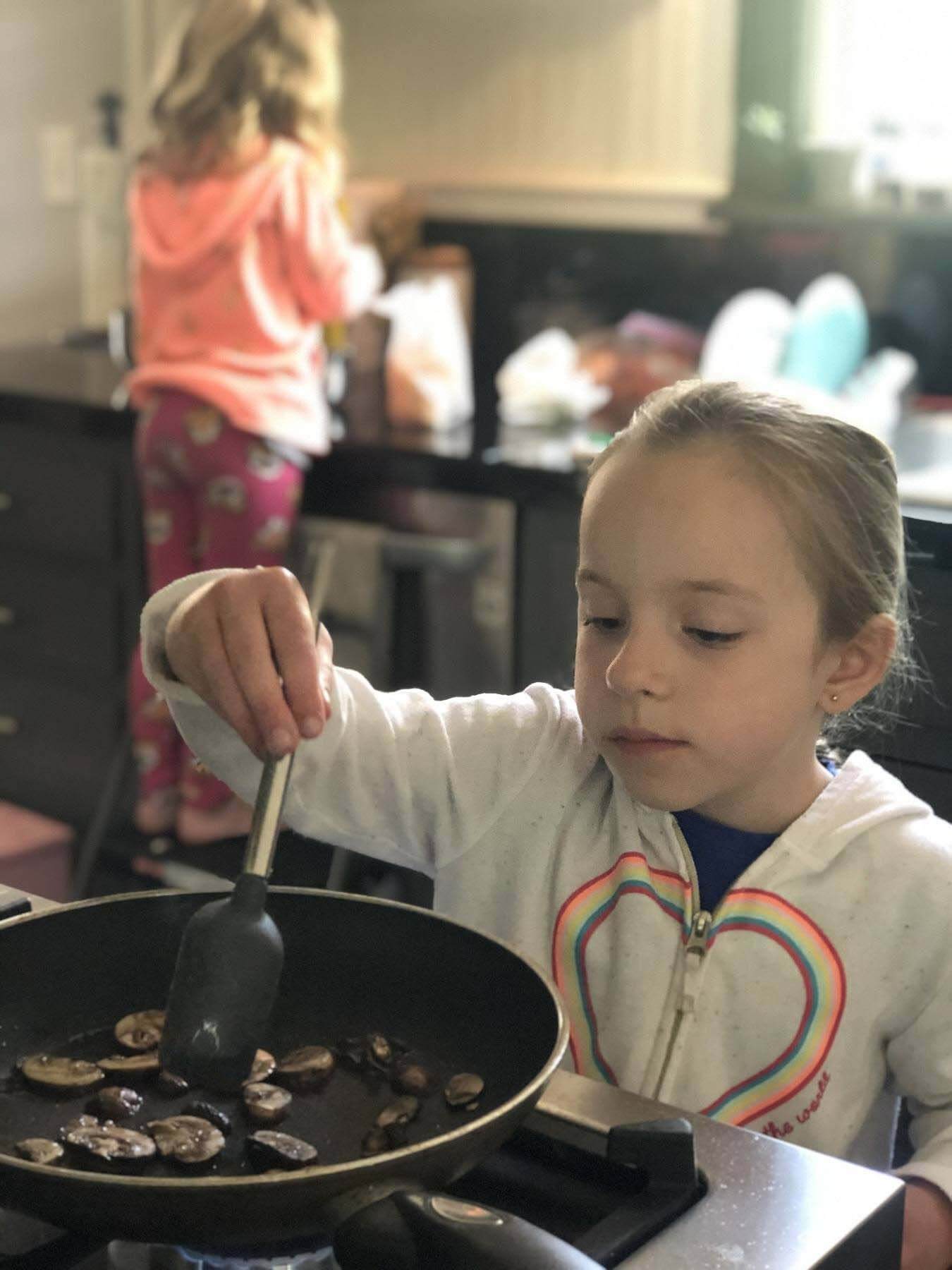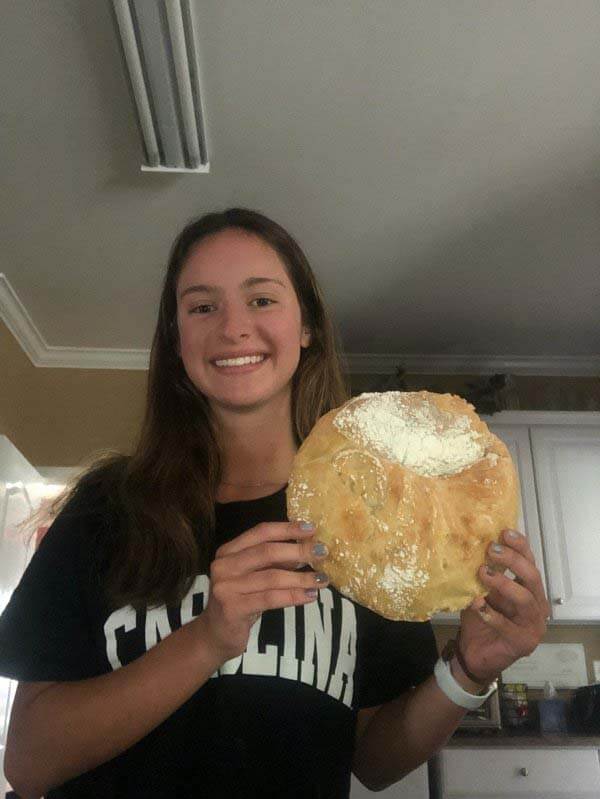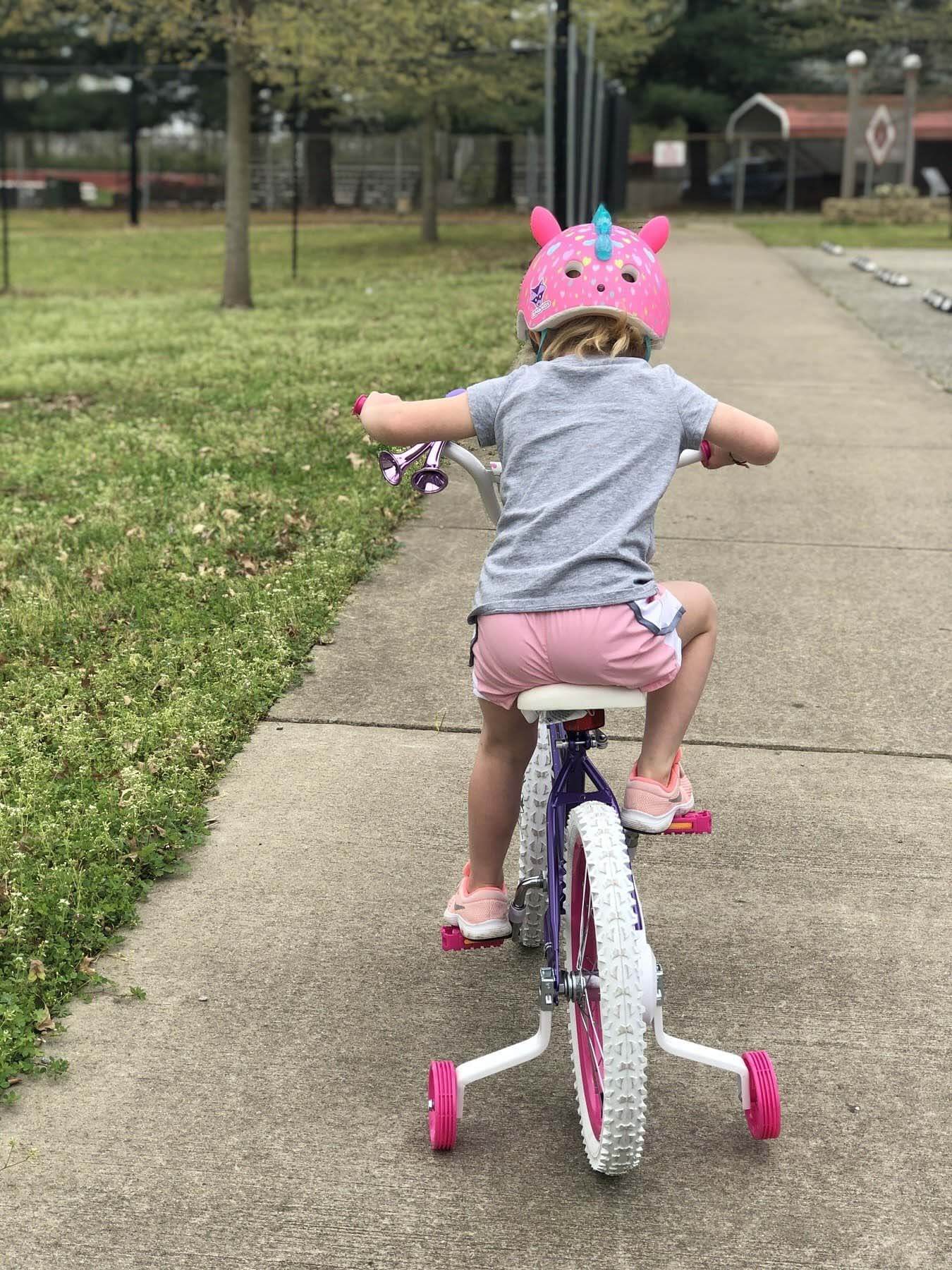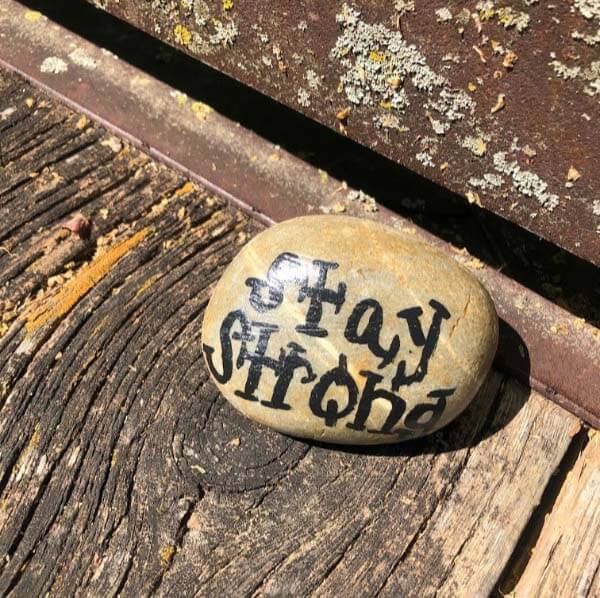The study of home economics originated as early as the late 1800s as a way to teach young ladies basic life skills and provide a pathway to employment. The disciplines of home ec loosely included food preparation, child development, home management, sewing, budgeting, hygiene and community awareness. Things like learning to sew on a button, balance a checkbook, or responsibly tote a “baby” egg around without dropping it for weeks on end were just a few of the lessons designed to impart that wisdom.
Home economics was rebranded in the early 1900s with the more official-sounding “Family and Consumer Sciences,” and boys were eventually added into the classroom mix as well. But somewhere along the way, we lost the budget and patience and teaching staff (in fact, there’s a critical shortage of teachers) for Life Skills 101, and home economics classes are less prevalent in the school curriculum than they should be.
Enter the quarantine.

There was a distinct moment in week three of being “safer at home,” in the middle of showing my two young daughters how to crack an egg properly, when it dawned on me: This quarantine has organically resurrected home economics. From learning kitchen basics and new skills to newfound independence and increased community awareness, the life lessons we’re picking up right now interestingly mirror the home economics curriculums of yesteryear, and we may just emerge from this time better off.
Here’s how “safer at home” is preparing kids of all ages — including adults! — for the future, in ways we could never have predicted.
7 Life Lessons We’re Learning From the Quarantine
Get Back in the Kitchen
Years ago, feminism stepped up to reject the idea of labeling cooking and cleaning as “women’s work,” which likely has something to do with home economics tapering off in the first place. But here we are, decades later, men and women alike, teaching our children the value of baking blueberry muffins or, in my case, making omelets.

You might have the next “Master Chef Junior” champion on your hands. Who knows? Either way, it never hurts to teach children the basics, such as how to boil water. Learning the proper names of various utensils and cookware is useful, and just think how much better off your children will be in college if they know how to make something other than a bowl of cereal or a cup of ramen. For younger kids, taste tests are a fun and delicious way to experiment with new foods and flavor combinations, and planting an herb or vegetable garden allows them to grow both their knowledge and something they can eat. Older kids can branch out a bit more independently and test drive some recipes on their own. “My family are huge fans of bread,” says high schooler Sabrina Knight. “So, with so much free time, I thought it would be fun to learn to make bread. It’s fun, and I get to eat something yummy at the end.”
Indeed baking is a winner, teaching kids the value of exact measurements and following recipes. Not to mention, we should never underestimate the joy-inducing power of a homemade dessert. “My daughter recently baked a cake by herself — one that has been my mom and grandma’s go-to for years. Now I’m passing it on,” says Katie Palmissano, mom of 8-year-old Antonia. “I supervised and guided, but I taught her how to turn on the oven and timer, carefully level out the ingredients, and why it’s important not to lift a mixer out of the mixing bowl while it’s turned on. She also used a toothpick to check if her cake was done, and she later made frosting and decorated it.”

So, embrace the trend: Teach your kids to scrub vegetables, grind pepper, melt butter, fill the ice tray, peel potatoes and measure out the sugar — it’s all useful. At the very least, you’ll have more help making Thanksgiving dinner this year.
Share the Household Workload
With everyone at home all day every day, our homes are getting even harder to keep up with (understatement of the year). But when your kids are so bored that they’re willing to clean just to stay busy, run with it. My 5-year-old actually begged me to let her vacuum the other day — unprecedented times, I tell you.
So how can you nurture this lesson along? Create teachable moments by showing your kids how to load the dishwasher, set the table and sweep the floor. (If you can get them to master folding a fitted bed sheet, you’ve made it into the big leagues!) Caleb Hooper, a teacher, says his 9- and 11-year-old daughters have been learning the household pet duties, including walking their dog several times a day and even removing ticks if they find one. “Our cat litter box and mouse cage have never been cleaner,” he jokes. Most kids enjoy the opportunity to feel helpful because it gives them purpose and structure. Consider this: Even if your children end up running a Fortune 500 company someday, it’s probably good if they know how to do their own laundry. And maybe, just maybe, this is how they’re gaining the management skills needed to run that business in the first place.
Hone a New Skill
This is undoubtedly a time when people are exploring new hobbies. Why not use this time to pick up an artistic and useful trade? One friend I spoke to said her son just helped his dad change out a ceiling fan, and another mentioned the quarantine has prompted her 14-year-old son to start a lawn care business. Margaret Bone, a high school student, has been dabbling in tie-dye. “I’ve been using a lot of my free time to tie-dye pretty much half of my closet,” she says. “At first I just loved that it was something time-consuming outside, but the more I do it, the more I realize I’m actually getting good at it!”

Whether or not you consider yourself a “crafty” person, there are YouTube videos galore that teach everything from crocheting doilies to building birdhouses. And don’t forget Pinterest, the project mecca. Search “kid craft” on Pinterest, and you’ll be down the DIY rabbit hole for hours. The point is that homemaking skills can teach our kids focus, fine motor dexterity and the ability to follow directions — all of which are life skills worth celebrating.
RELATED: 8 New Hobbies To Discover During Quarantine
Money Matters
Financial literacy has been a long-standing branch of home economics, and while most of us tackle the idea of an “allowance” at some point or another, some kids are using the quarantine to grasp a few of the broader concepts. Kristi Kelly, mom of 12-year-old Jack, says, “During the quarantine, he’s been learning about the stock market — that you invest to make money. We’re not getting into compound interest or anything like that, but he’s learning that if you put a little bit of money in, and you leave it alone, it can grow or go down. It’s the idea that you don’t just have to put your money in the bank. This time for him is not just about sitting in front of a computer and learning sixth-grade math.”
Embrace the Freedom
“Safer at home” is offering ample time for childhood rites of passage such as learning to ride a bike or play a new game. The pride that comes with finally learning to skip, use scissors, or tie shoes for the very first time gives kids a strong sense of self-awareness and self-confidence that will serve them well in the years to come. There’s also a lot to be said for the bumps and bruises that come along with that learning process. Skinned knees and scraped elbows are a lesson in resilience and getting back up again. Embrace the freedom and don’t fear the fall, we’re teaching them. The ride will be even better and steadier next time. Maybe that concept is teaching us something about our own perseverance during this quarantine, too.

A New Kind of Social Studies
I can’t imagine a more poignant and complicated education in social studies than what we are all experiencing right now. In all of the lessons learned throughout “safer at home,” perhaps the biggest one is how our community — and our country, and the world — is the sum of its parts. By staying home, we’re protecting our friends, neighbors, extended family and even people we don’t know. In so doing, we are teaching our kids to respect spatial boundaries and navigate the emotional tug of not being able to closely interact with friends and teachers and loved ones. But now, more than ever, we are also reaching out to people in the only ways we can. We’re placing more importance on family. We’re waving at strangers jogging by, having classroom Zoom meetings and participating in celebratory birthday caravans. We’re gloving up to de-litter our neighborhoods so we can all enjoy a safer, cleaner space, and we’re painting rocks with messages that remind others to stay strong during isolation. We’re learning how to inspire and be inspired, despite the challenges we are facing.

Learning is Ageless
To be fair, it’s not just our children who are picking up new hobbies and stumbling onto previously undiscovered skills. Single, married, kids, no kids, whatever your age … learning is for all. Now, more than ever, we have time to watch webinars and pursue online classes, and take up fitness challenges or journaling. We’re learning to plant gardens and tackling home projects that might otherwise have gone unattempted or left to a professional. Take StyleBlueprint’s 40-something Editorial Director, Ashley Haugen, for example. “Since we’ve been home so much lately, my husband has been knocking out little projects that we otherwise wouldn’t have time for,” she says. “He needed some help connecting the dryer hose he replaced, and so I got back there, attached the hose and tightened the worm clamp. I have never heard of a worm clamp, but there was definitely a triumphant moment accomplishing something so silly, but something that we would typically outsource.”
Ashley’s not alone. Others like Nikki Kowalczyk are also branching out, taking on new challenges and adapting. The 32-year-old compounding pharmacy technician says, “We’re trying to limit our trips to the grocery store to help the social distancing, so I found a healthier banana bread recipe with the ingredients we already had. It turned out great!”
There is no doubt that the time we’re currently living in poses challenges and hardships, but we’re choosing to filter out the fear and continue cultivating the positive. Call it what you wish, our quarantine home economics course is teaching us all to take more time out to focus on love, learning, laughter, self-improvement and memory-making. What more can we ask for right now?
**********
Give your inbox the Southern makeover it deserves! Subscribe to our daily emails HERE!



















